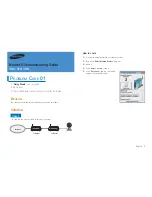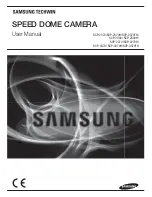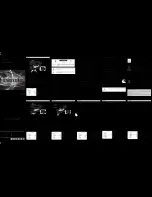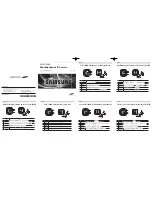
Operating the H Cameras for Digital and Film Photography
49
or change a screen, remove the viewfi nder. On the right side of the camera next to the grip
you will see a chrome piece that is used to hold the viewfi nder in place. In front of the chrome
piece, closer to the lens, you will see a black piece with an opening in the center. This piece is
part of the screen. Insert a ball point pen or similar object in the opening and lift upward. To
replace the screen, place the screen properly in the recess on the left side then push down the
right side with a ball point pen so the screen locks in position. Re-attach the viewfi nder.
Adjusting the Eyepiece Diopter Correction
The viewfi nders are designed so the entire focusing screen can be seen with or without eye-
glasses. The longer rubber eyecup is most practical for viewing without glasses. A shorter one
is available for viewing with glasses. More details about viewing with or without glasses are
found in Chapter 7. When deciding whether to view with or without eyeglasses, keep in mind
that the eye-level fi nders on the H cameras can be adjusted over a wide diopter range so you
can probably see a sharp image either way.
After you make that decision, you must adjust the fi nder to your eyesight. To do so, it is
best, but not necessary, to remove the lens from the camera so you see nothing but the focus-
ing screen. Turn the eyepiece adjustment control (item 5, Figure 4-1) on the side of the fi nder
until you see a sharp image of the spot meter and focusing indications on the screen. After
the fi rst adjustment, move your eye away from the fi nder, look at something in the distance
for a few seconds to relax your eye, and then view through the fi nder again to see whether
the image is still sharp. If it is not, make a new adjustment and repeat the process. If you make
this adjustment with a lens on the camera, make certain that you adjust the diopter correc-
tion for a sharp image of the screen markings, not of the image itself.
Waist-Level Viewing
Since viewing from the top has many advantages especially when the camera is used on a tri-
pod or used at low angles, the H models can also be equipped with the HVM waist-level fi nder.
This can also be a good choice when working with people or professional models as it is eas-
ier to maintain eye contact and direct the subject. The fi nder has a 3.25
magnifi cation but no
built-in diopter corrections as this should not be required by most photographers. Hasselblad,
however, makes a holder for custom made diopter correction lenses if they are needed.
The waist-level fi nder does not have the metering electronics of the eye-level types so
you have no metering system in the camera. This should not be a serious drawback since this
fi nder is most likely used in the studio with studio electronic fl ash. You use
The Hasselblad
Manual
exposure mode and set the aperture and shutter speed based on the reading from a
handheld exposure meter or based on past experience.
WORKING WITH FILM MAGAZINES
The H Film Magazine
The HM16–32 fi lm magazine is designed for the 6
4.5 cm format and can be used with 120
and 220 roll fi lm without manual adjustment. When you use bar-coded fi lm, the pressure plate
Summary of Contents for Digital Camera
Page 1: ......
Page 2: ...The Hasselblad Manual ...
Page 3: ...This page intentionally left blank ...
Page 13: ...This page intentionally left blank ...
Page 166: ...Heidi Niemala Photographed for clothing designer with a 150mm lens ...
Page 167: ...Heidi Niemala Editorial portrait with a 150mm lens ...
Page 168: ...Heidi Niemala Photographed with a 50mm lens during a sand storm at White Sands ...
Page 200: ...Jonathan Exley Lifestyle Designer Kathy Ireland Courtesy of kathyireland com ...
Page 244: ...Marco Grob A make up test shot made with an HC Macro 4 120mm lens on an H camera ...
Page 398: ...Close Up Photography on Film or Digital 383 ...
Page 400: ...Jonathan Singer ...
Page 401: ...Jonathan Singer ...
Page 421: ...This page intentionally left blank ...














































